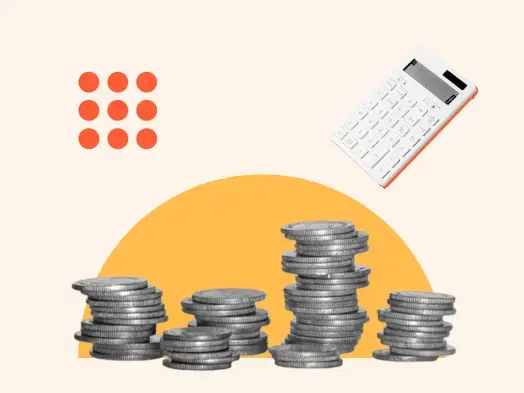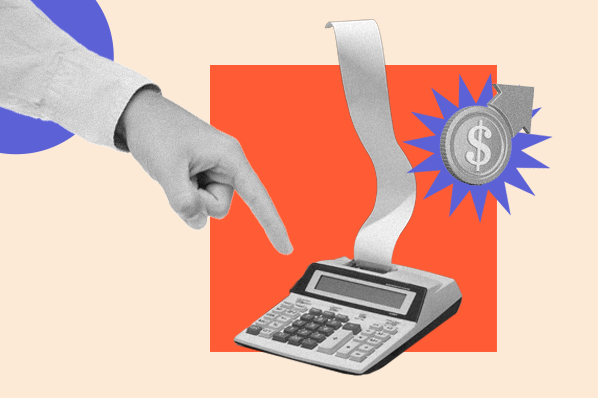Understanding the different economic systems that exist around the world can help your business strategize, identify opportunities for growth, and gain a competitive advantage.
The truth is, some economic systems are more beneficial for entrepreneurs than others. If you want to establish a business in a market with a different economic system than the one you’re used to, you should know what rules or regulations apply and how to do business there.
This guide will explore the types of economic systems, their pros and cons, and examples of each system.
What are the economic systems?
An economic system can be thought of as a guiding framework or set of rules that people need to adhere to when engaging in economic activities. These systems play a role in shaping resource allocation, production, and distribution within an economy.
In addition, economic systems are built on four fundamental functions:
- What to produce: The economic system determines which products and services will be produced — what is consumed more will likely be prioritized.
- How much will be produced: The quantity produced is often based on market demand, the need for survival, or the government.
- How to produce: The economic system affects which resources will be used, such as labor and capital, and the methods of production.
- Who gets what: In some economies, income plays a huge role in determining how the output is distributed; in others, the society or government makes this decision.
Why are economic systems important?
As a business owner, having a solid grasp of the economic system in which you operate helps you make sound decisions and increases your likelihood of success. For instance, a heavily regulated economy can limit the type of services or products you can offer — a fact that might inform which markets you expand into or which products/services you offer in those markets.
Matt Diggity, founder of SEO marketing firm Diggity Marketing, says, "Different economies provide different playgrounds, each with its unique set of swings and roundabouts. It’s all about understanding the landscape and finding where you fit best.”
What are the four types of economic systems?
The four types of economic systems are traditional, market, mixed, and command economies. Cultures or governments dictate supply in traditional and command economies. In contrast, the amount of products produced is based on consumer demand in market and mixed economies.
Traditional Economic System
A traditional or conventional economy is the oldest system. It’s based on agriculture, hunting, and fishing, and is independent of external influences. Citizens’ culture and traditions dominate this type of economy.
Citizens gain needed skills from their families and communities. The community produces everything it consumes, ensuring the population is self-sufficient.
International trade isn’t a priority, and citizens use a barter system to acquire goods from each other. In addition, there aren’t as many levels of power or authority in a traditional economy as in other economic systems.
Developing countries like Bangladesh, Haiti, and — to some extent — Brazil follow this type of economic system. That said, all societies began with a traditional economic system.
Although a conventional economy offers several benefits, including no surplus and minimal threat to the environment, it isn’t without downsides. Since people follow existing traditions, economic growth is entirely dependent on population growth, which can be minimal. Plus, there’s little access to technology and no scientific development.
Overall, self-sustenance drives this economy, and traditions and beliefs take precedence over everything.
Market Economic System
A market economic system, AKA a free market system or laissez-faire economy, includes minimal government intervention or control. In its place, sellers and consumers dictate the price and quantity of goods and services produced.
Businesses produce goods according to consumer demand. In other words, the products people want the most will be made to meet that demand. After all, companies want to invest in products that generate profit.
When there is a low supply and high demand for a product, its price goes up; when the reverse happens, the price goes down.
A market-based system offers various benefits. For instance, competition between businesses encourages innovation, which can help stimulate economic growth and enhance customer satisfaction.
Unfortunately, a market economy hampers social welfare since the motive of self-interest or profit drives this system. Another drawback is an uneven distribution of income, as the rich tend to get richer and the poor tend to get poorer.
“It also tends to reward short-term speculation over long-term investment, leading to higher costs for consumers and businesses,” notes Evan Tunis, president of insurance broker Florida Healthcare Insurance.
It bears noting that “market economy” and “capitalist system” are often used interchangeably, but they have some distinctions. Capitalism is based on private ownership and pursuing wealth, while a market system focuses more on the exchange of goods, services, and money.
In reality, most countries don't have a completely free market system. Instead, they have a mix of different systems that include some level of government intervention, like subsidies and regulations.
“Think about some countries where businesses pay up to 50% of revenue in tax,” Diggity says. “That’s a huge obstacle to growth and innovation. So it’s not just about whether it’s a mixed or free market economy, but how it’s all balanced.”
However, economists consider Switzerland one of the closest examples of a free market economy.
Command Economic System
Unlike a market system, the government typically controls a command or planned economy. In other words, there are many regulations.
The government solely decides what to produce, the methods of production, the distribution of goods, and the price. In short, it owns all means of production. In addition, private ownership of property is limited, and the state employs the labor force.
Although the government dominates a command system, there are some potential benefits. For instance, a command economy could ensure employment for all citizens. Not to mention, the government could establish social programs to fulfill citizens’ basic needs, such as food, housing, and health care.
One drawback of this system is a lack of innovation and competition, as people will be less inclined to disrupt the status quo. And since this system doesn’t depend on market forces of supply and demand, consumer demand may be misconstrued, resulting in surpluses and shortages.
Communist countries like North Korea and China have command economic systems.
Mixed Economic System
A mixed economic system combines elements of command and market systems. Government and private entities have a role in the economy, so the public and private sectors coexist. Key industries, such as health care and transport, are subject to regulation by the state.
The law of supply and demand dictates prices, but the government can implement things like price ceilings to protect the interests of consumers. However, this may lead to lower-quality products being produced, since some businesses may need to cut corners to compensate for lower prices.
Basically, it’s all about striking a balance between individual freedom and government control. For instance, Americans have the freedom to choose their occupations and negotiate pay. At the same time, minimum wage laws prevent companies from exploiting workers.
So, even though the government takes an active role, the US economy still maintains a substantial amount of economic freedom.
Since a mixed system combines the strengths of market and command economies, its advantages include:
- Creating equal opportunities for employment
- Allowing consumers to choose goods and services that suit their needs or budget
- Encouraging innovative processes due to competition among companies
- Reducing the likelihood of monopolies through government interventions, such as antitrust laws
However, if the state exercises too much control over the economy, it can limit growth in the private sector.
In addition, such a system can be more advantageous for those with the most money and influence. For instance, wealthy businesses can lobby the government to receive more tax breaks, or for regulations that favor established businesses vs. startups.
Many countries in Western Europe, like Germany, implement a mixed economic system, as does India.
Economic systems examples
Below are examples of the different types of economies:
Traditional economy example
Many indigenous peoples, like the Inuit, practice a traditional economy.
Inuit children learn the skills needed to survive the harsh cold of the Arctic. And this knowledge is passed down from one generation to the next. Their customs entail sharing — not selling — their harvest and spoils with other members of the community.
Entrepreneurship is not encouraged in this system, where survival and upholding traditional practices are prioritized.
Market economy example
Switzerland has the second-freest economy in the world, according to the Heritage Foundation’s 2023 Index of Economic Freedom, making it a close example of a real-world market system.
The conditions for conducting business here are highly favorable. For example, you can take advantage of a skilled workforce. However, the high employment costs can burden small businesses.
Switzerland also has agreements with other countries to prevent double taxation on income. Its decentralized tax system enables you to operate in a state (canton) with lower tax rates, like Zug. Additionally, corporate tax rates are modest.
And if you’re a fintech startup, you can apply for the fintech license. It has less stringent requirements compared to a traditional banking license and was introduced to lower barriers to market entry and promote competition.
Command economy example
Since 1959, Cuba has followed a command economic structure. It’s dominated by state-run enterprises, and the government handles economic decision-making. This has resulted in goods shortages and, consequently, a thriving black market.
What’s more, the implementation of market-oriented reforms has been progressing at a slow pace. That said, Cuba lifted the ban on private businesses in 2021, but you must still contend with the weakening peso and other problems if you do business here.
Mixed economy example
Singapore follows market economy principles, but there’s also considerable government oversight in key areas like education and housing, making it a mixed economic system.
For instance, it implemented reforms to ensure students’ well-being, and 77% of Singaporeans live in public housing.
Many companies don’t need a business license to operate there, but certain businesses, such as spas, are required to obtain one.
First-time entrepreneurs and startups have several options to finance a business, like the Startup SG Founder grant.
However, navigating the strict government regulations can be challenging, especially for new companies.
Understanding how each economic system works will help you decide where to start or expand your business.
What did you think of this article?
Business Acumen








![Business Ethics — Why They Matter and How Your Company Can Get it Right [+Expert Tips]](https://53.fs1.hubspotusercontent-na1.net/hubfs/53/business-ethics-1-20250224-5750570.webp)






